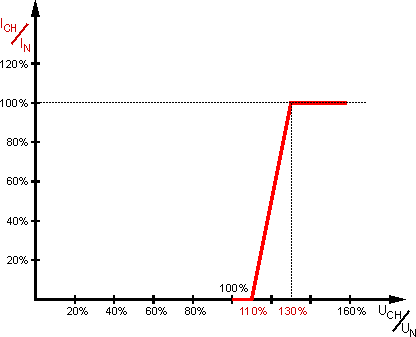Chopper operation
You can connect a braking resistor (chopper) to one of the two motor channels instead of a DC motor. Select the "Chopper resistor" mode for this channel. See chapter Selection of the operating mode.
The motor must actively brake for positioning tasks. The mechanical energy is thereby converted back into electrical energy. Small quantities of energy are taken up by a capacitor in the box. Further storage capacities, for example in the power supply unit, can also take up energy. In any case, the feedback leads to an increase in voltage.
A braking resistor converts the excess energy into heat. When the voltage reaches 110% of the nominal voltage (see chapter Adaptation of current and voltage), the correctly set output stage sends a fast-pulsed current through the braking resistor.

Example: Nominal voltage 48 V
20% | 40% | 60% | 80% | 100% | 110% | 130% | 160% |
|---|---|---|---|---|---|---|---|
9.6 V | 19.2 V | 28.8 V | 38.4 V | 48 V | 52.8 V | 57.6 V | 76.8 V |
Example: Nominal voltage 24 V
20% | 40% | 60% | 80% | 100% | 110% | 130% | 160% |
|---|---|---|---|---|---|---|---|
4.8 V | 9.6 V | 14.4 V | 19.2 V | 24 V | 25.2 V | 31.2 V | 38.4 V |